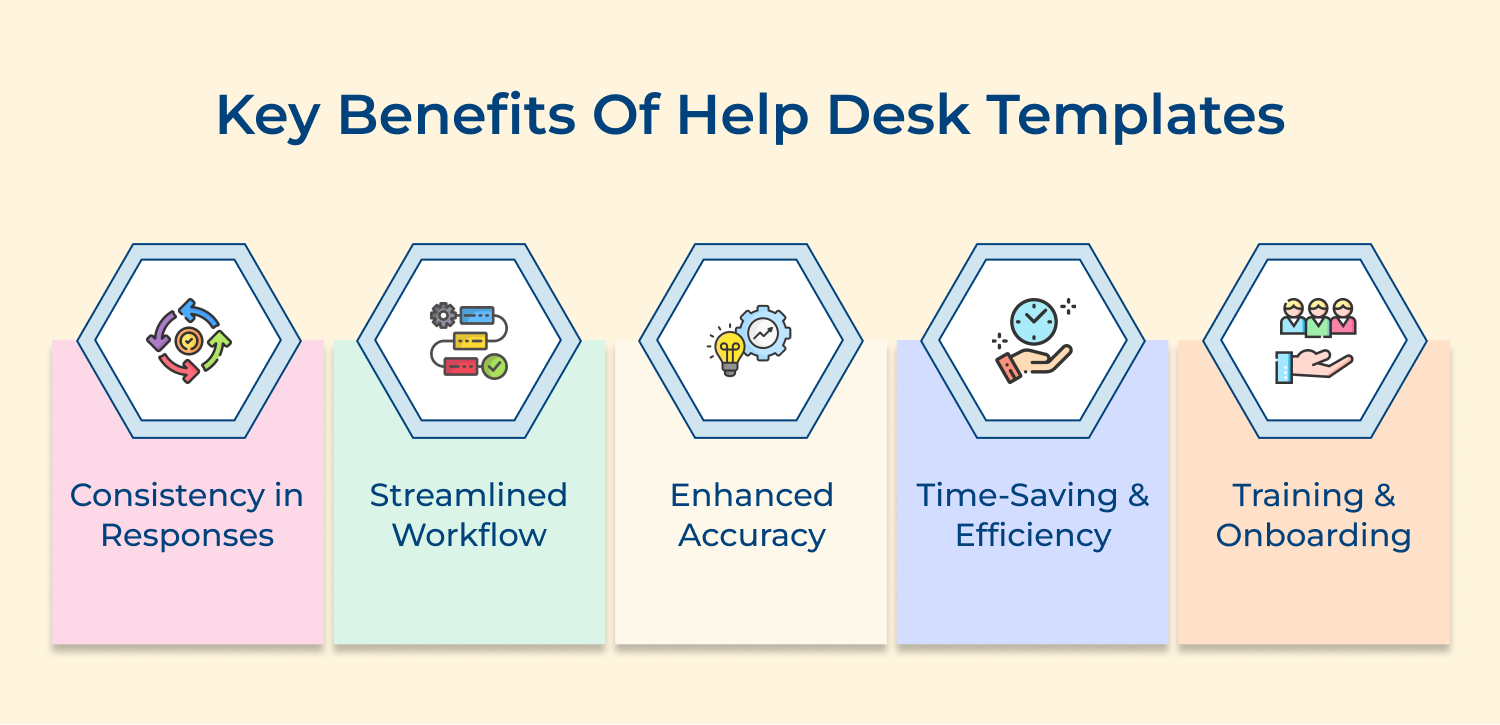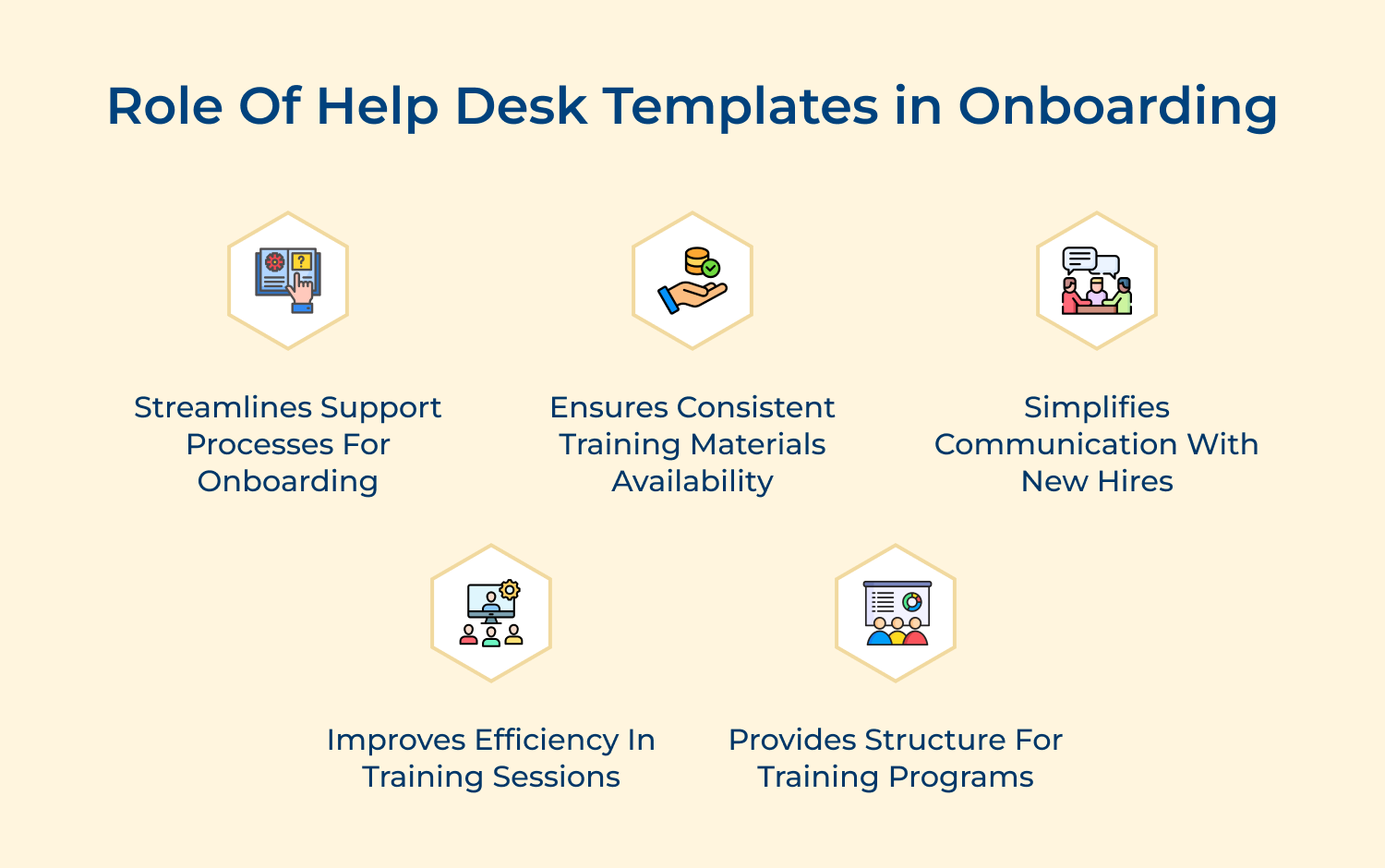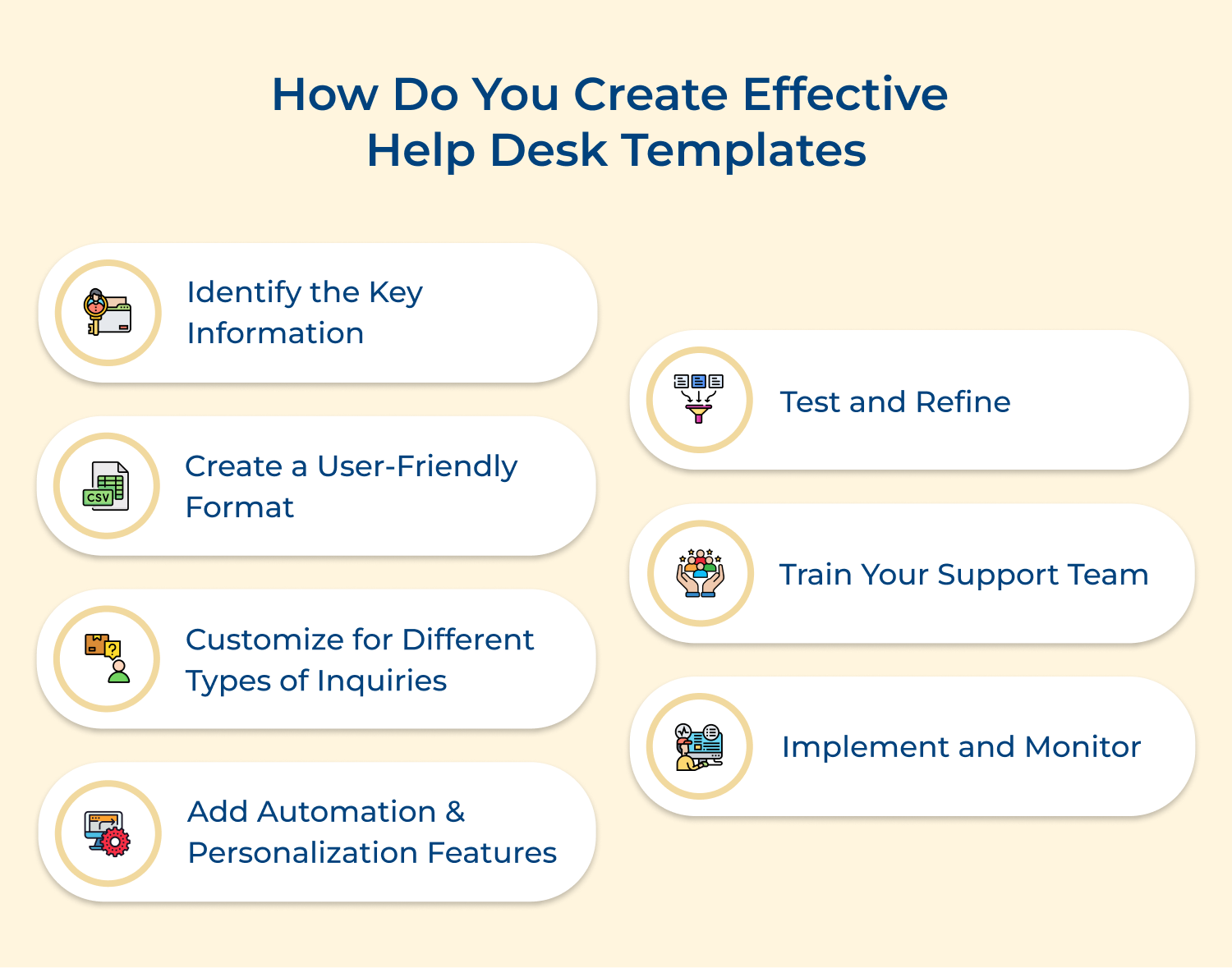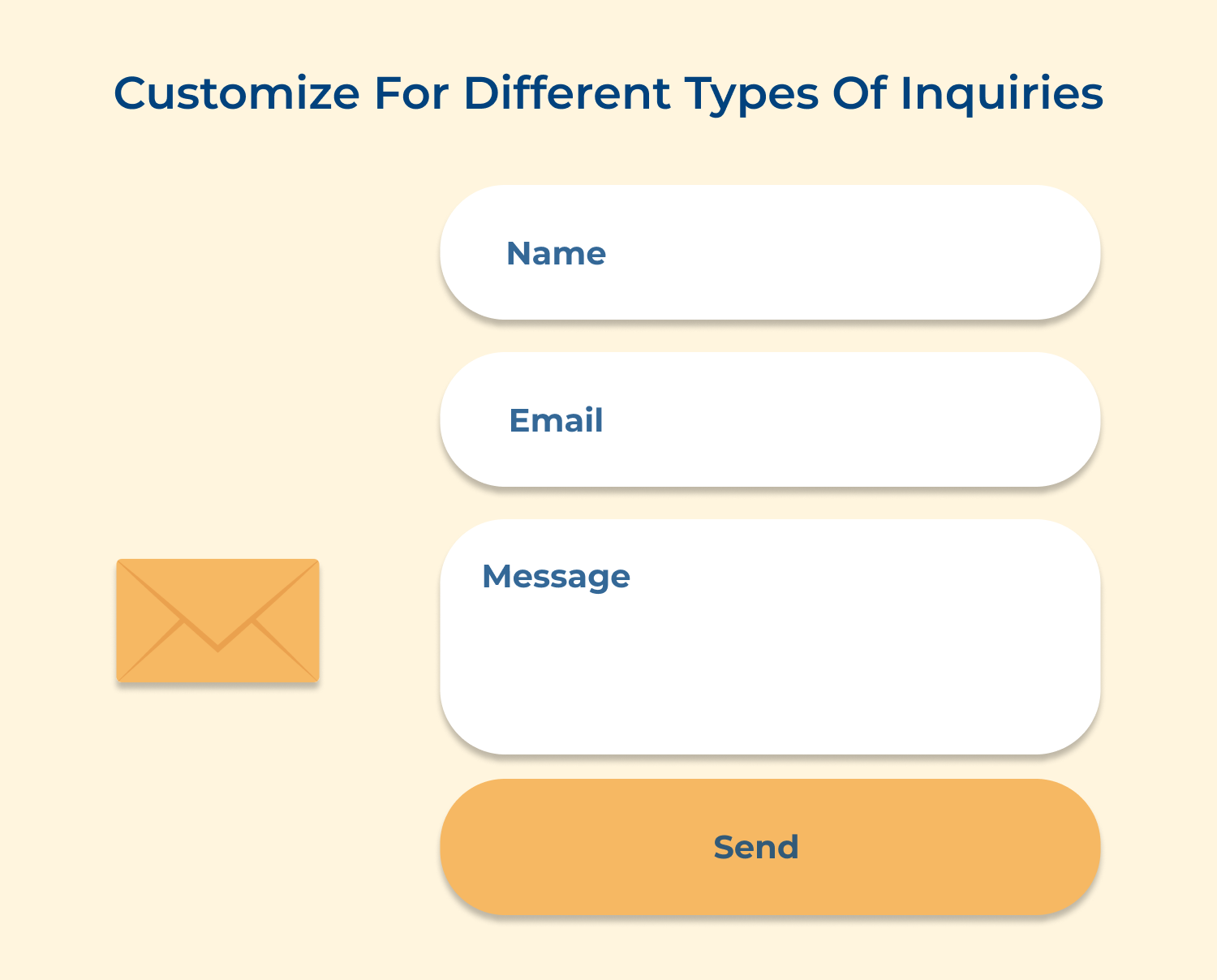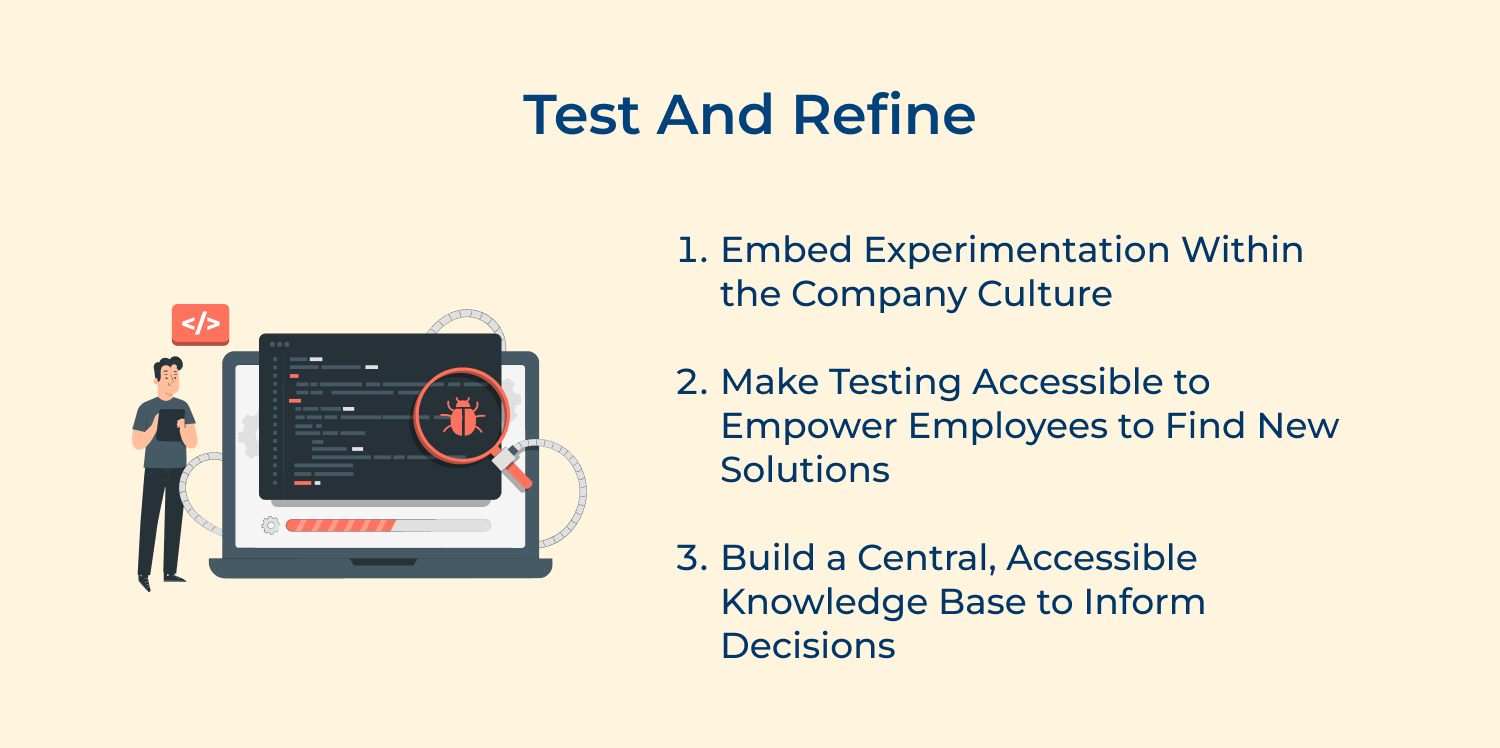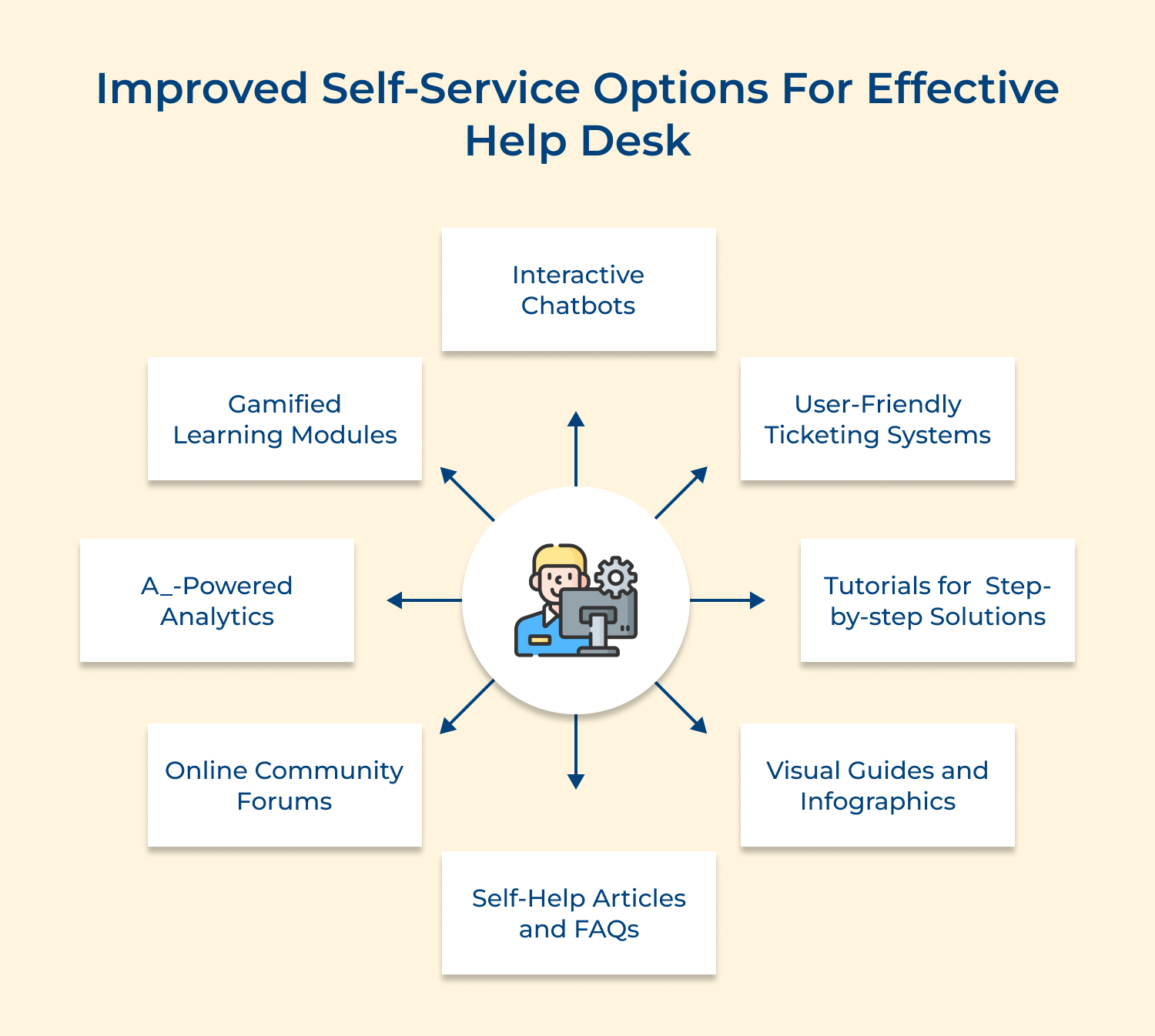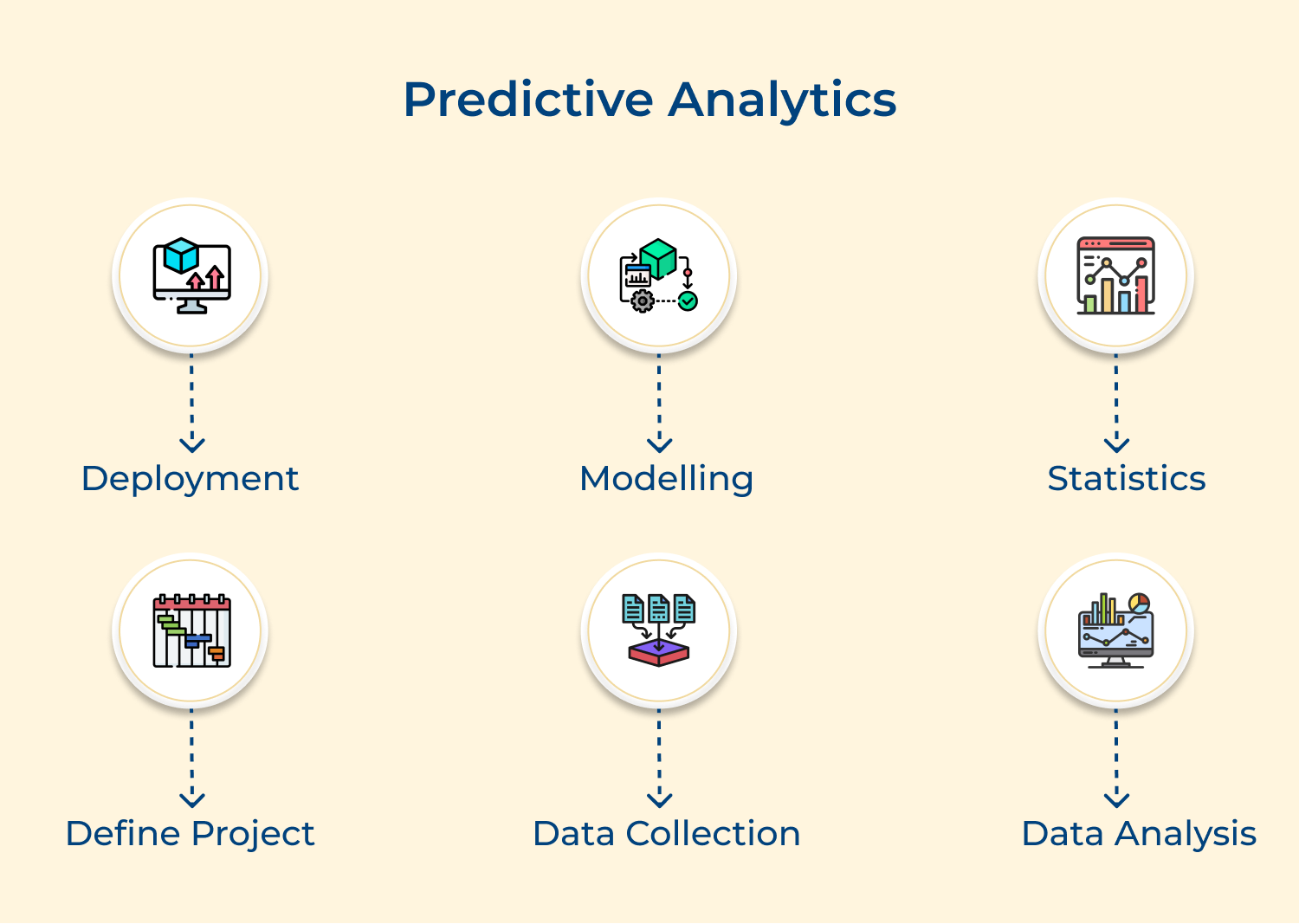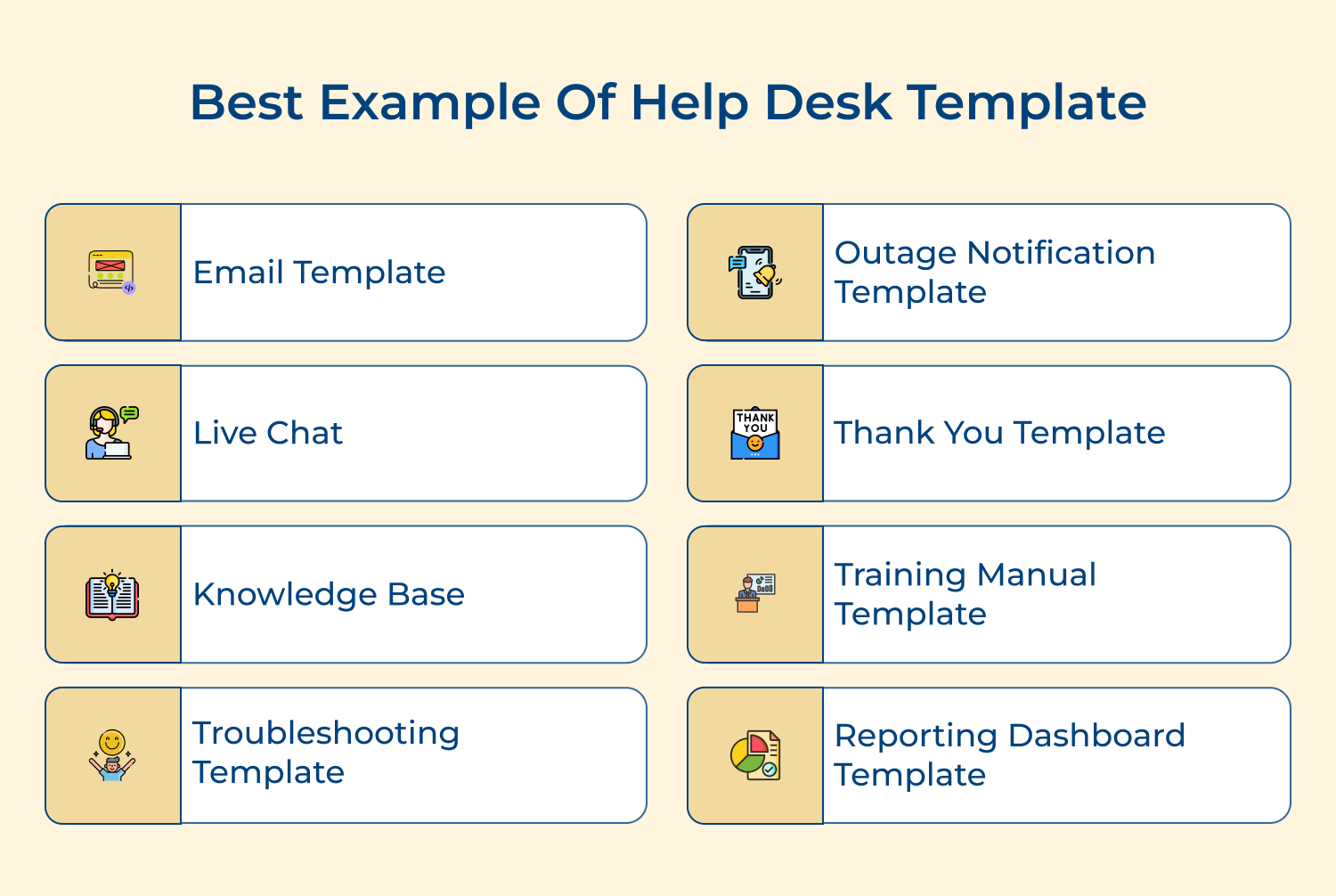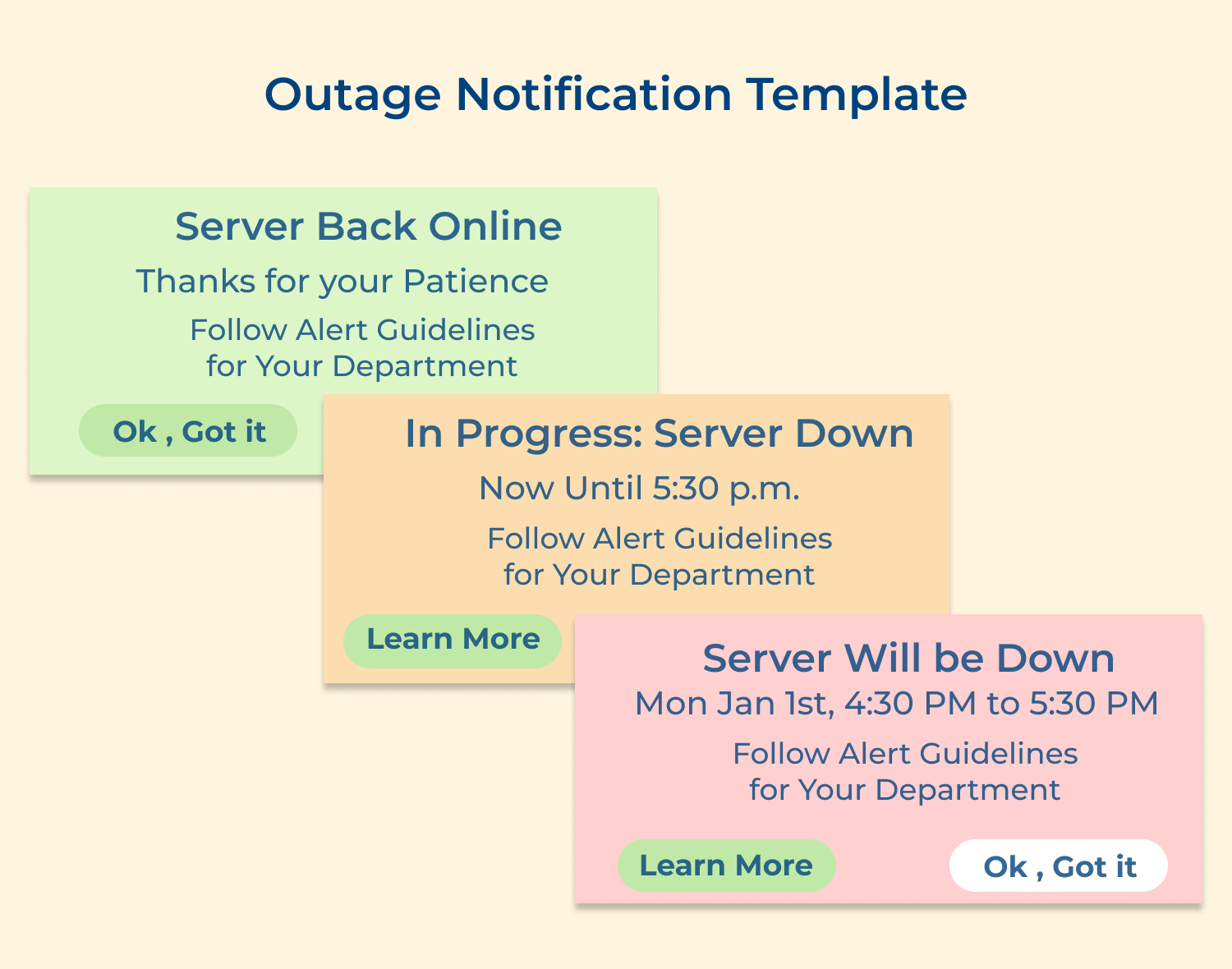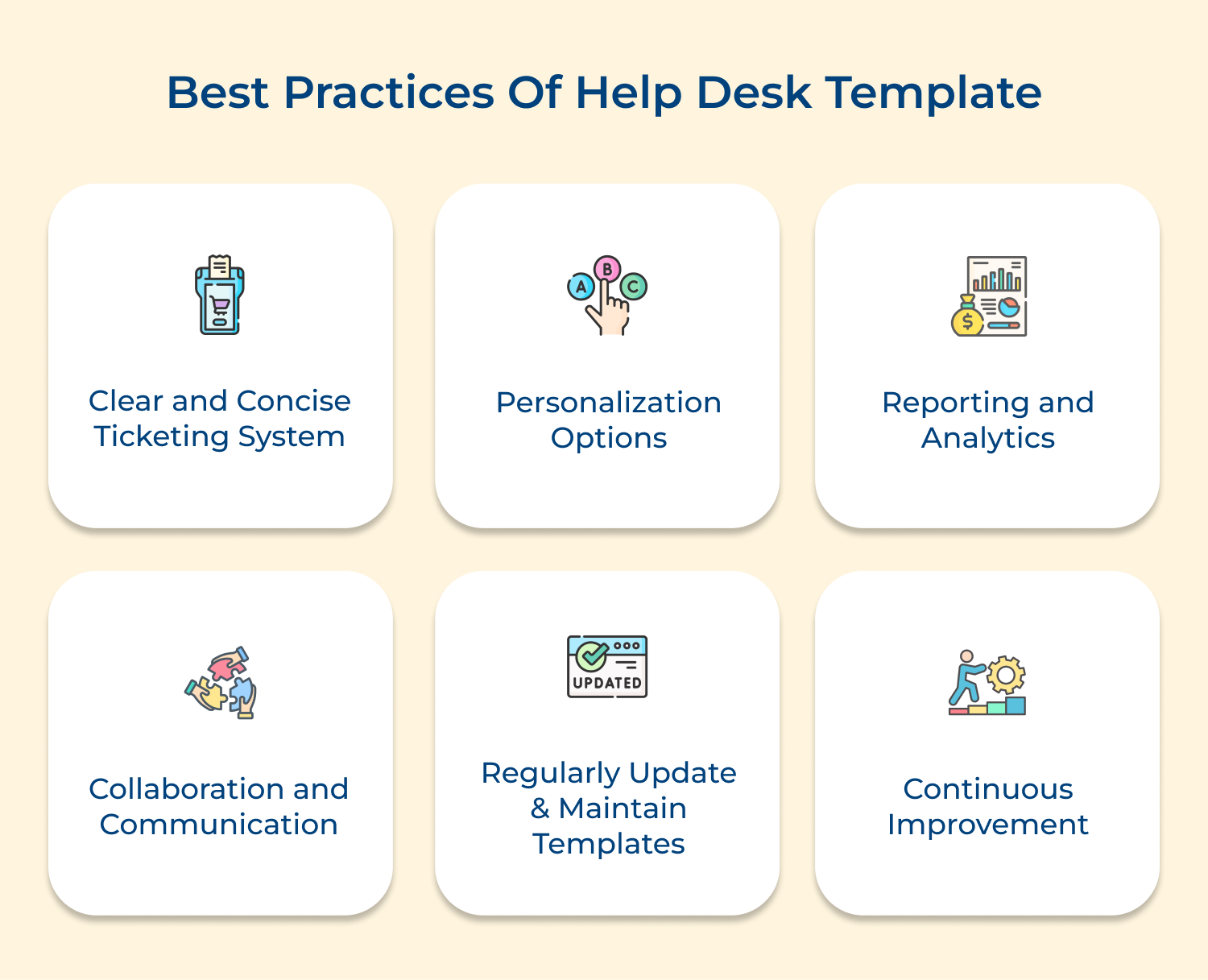1. Clear and Concise Ticketing System
A well-structured ticketing system is crucial for managing customer inquiries effectively. The template should include fields for categorizing tickets based on urgency, priority, and type of request. It helps prioritize as well as route tickets to the appropriate team members, ensuring prompt resolution.
2. Personalization Options
While it is important to have a standardized template, it is equally crucial to provide agents with room for personalization. Each customer inquiry is unique, and agents should have the flexibility to tailor their responses accordingly. Including personalization options within the template, such as placeholders for customer names or specific issue details, can help agents provide personalized as well as engaging support experience.
3. Reporting and Analytics
Monitoring & analyzing customer support metrics is essential for improving service quality. Look for a help desk template that provides robust features. It allows you to track metrics like response time, ticket resolution rate, customer satisfaction scores, and other key performance indicators. By analyzing the metrics, you get to identify areas for improvement as well as implement necessary changes.
4. Collaboration and Communication
A service desk template should facilitate collaboration and communication among team members involved in resolving customer inquiries. Look for features like internal notes, team assignments, chat functionality, etc. The tools enable effective communication, reducing response time all while ensuring a seamless customer support experience.
5. Regularly Update & Maintain Templates
The templates should not be created once and then forgotten. It is important to regularly review as well as update them to ensure they remain relevant. As technology evolves and customer needs change, templates may need to be modified or expanded. Create a system for reviewing as well as updating templates on a regular basis to ensure they continue to meet the needs of the help desk team and customers.
6. Continuous Improvement
A service desk template is not a static document but should be regularly updated based on customer feedback and changing support needs. Encouraging agents to provide feedback along with suggestions for improvement can help fine-tune the template to ensure its effectiveness over time. Regularly monitoring customer satisfaction metrics can provide insights into areas of improvement for the help desk template.
Streamline your Customer Support with Help Desk Templates
Help desk templates transform chaotic support operations into a structured system where agents respond with confidence and consistency. By standardizing common interactions, you build a foundation of institutional knowledge that strengthens with each resolved ticket. Your team can focus on unique challenges rather than rewriting the same responses repeatedly.
The power of templates lies in their adaptability. While providing structure, they allow for personal touches that customers value. As support needs evolve, your templates evolve too, continuously refining your approach based on what works best. This balance of efficiency and personalization creates support experiences that truly resonate.
